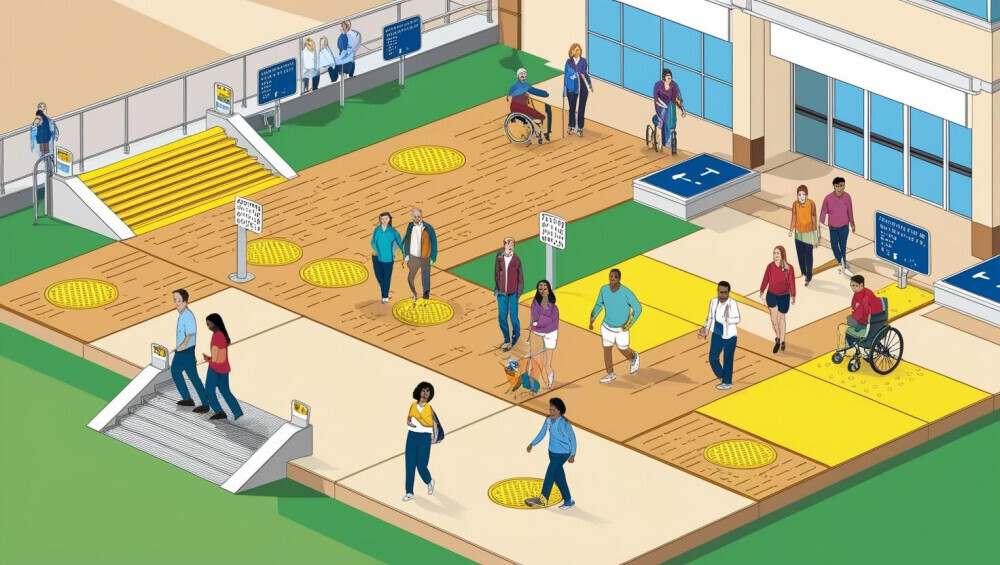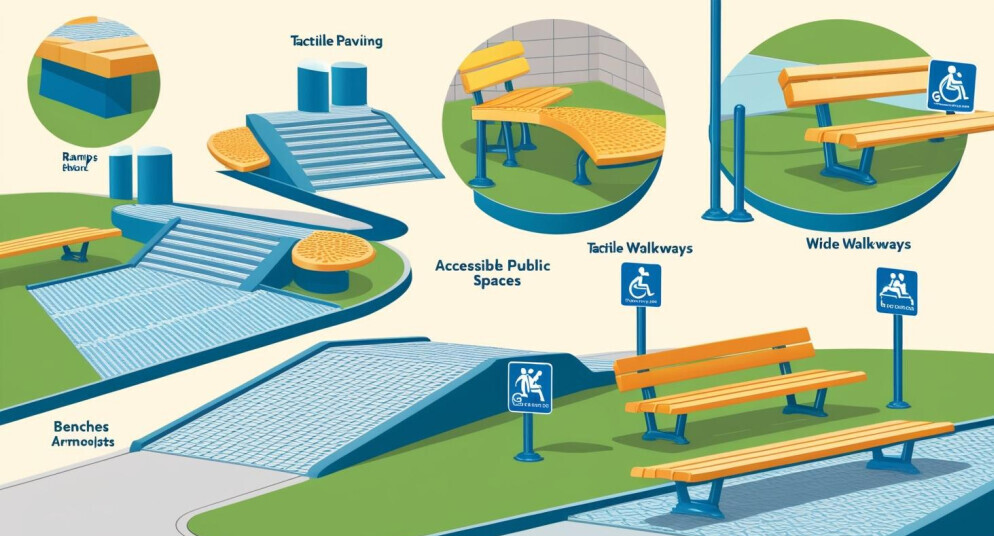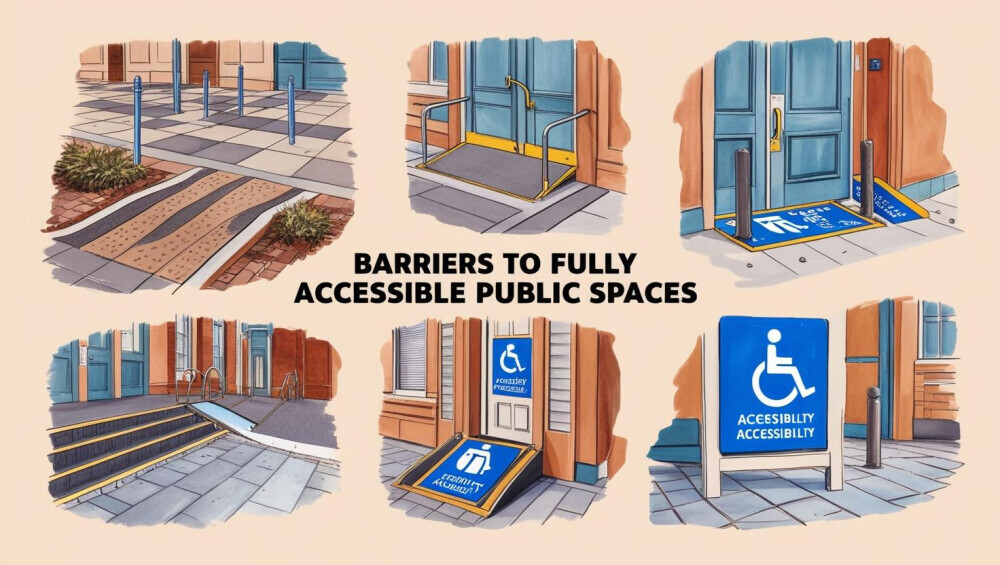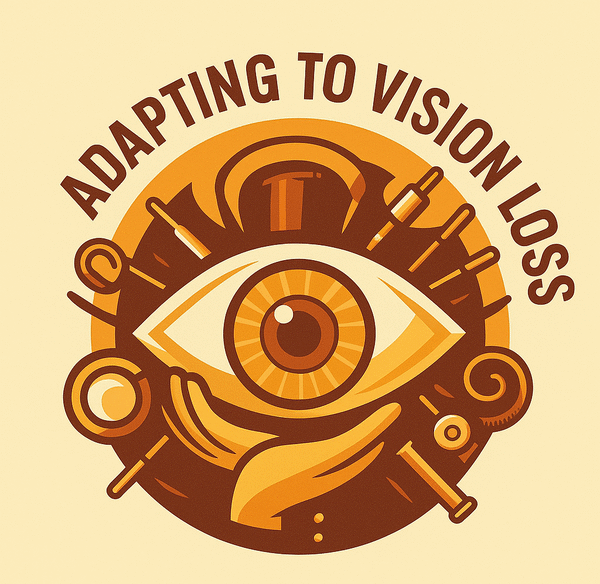
Accessibility isn’t just a topic for discussion—it’s a critical aspect that shapes how our cities and communities function. Many people face barriers that the rest of us might not even notice. When we walk into a store, go to a park, or use public transport without giving it a second thought, it’s a reminder of the privilege of accessibility that not everyone shares.
Imagine trying to navigate a busy train station in a wheelchair only to find there are no elevators available. Or picture someone with a visual impairment trying to cross a street with unclear or missing audio cues. These aren’t just possible scenarios; they are everyday challenges for millions of individuals worldwide.
Current statistics paint a stark picture. According to the World Health Organization, over one billion people live with some form of disability. A significant portion of this population often struggles with navigating public spaces, which should ideally cater to everyone regardless of their physical or cognitive limitations.
Real-life stories illustrate the impact of these challenges. Take Tom, for instance, a seasoned wheelchair user who’s frequently had to alter plans because of inaccessible locations. Or consider Mia, who, despite her keen interest in cultural events, often sits out because venues lack the accommodations she needs.
Accessibility in public spaces is critical not just for those who have disabilities but for creating a more inclusive, fair society. As we make strides to rectify this, it’s important to listen, understand, and act on the needs of this community. By recognizing these challenges, we can all play a part in advocating for and supporting the design and implementation of more accessible spaces.
Setting the Stage: The Legal Framework and Policies
About three decades ago, significant steps were taken to establish a foundation for accessibility in public spaces. Laws like the Americans with Disabilities Act (ADA) in the United States made it illegal for public areas to remain inaccessible. These regulations sent a strong message that inclusion is non-negotiable.
Understanding these legal frameworks is crucial because they set the standard for what public spaces should strive to achieve in terms of accessibility. From the architectural guidelines to detailed provisions for transportation and communication access, the ADA and similar laws enforce a baseline that all public entities must meet.
It’s not just about having rules in place, though. The journey of these laws—how they came to be, the changes they’ve undergone, and the push for compliance—can serve as inspiration and a reminder of the ongoing battle for equality.
However, compliance isn’t simply a box to be checked off; it’s about continuous improvement. Some establishments still lag behind due to understanding gaps, financial constraints, or just sheer neglect. While there are penalties for non-compliance, these hardly match the frustration and exclusion individuals face as a result.
Seeing these challenges, advocacy groups and policymakers work together to enhance enforcement. The focus is on not just following the letter of the law but embracing its spirit to create true accessibility across all public domains.
By raising awareness and understanding these legal mandates, we move closer to ensuring that accessibility isn’t just a feature but an integral part of our environments. It’s all about building a world where everyone, regardless of ability, feels welcome and valued.

Identifying Essential Elements of Accessible Public Spaces
Crafting spaces that everyone can navigate easily isn’t just about ticking off a checklist. It’s about anticipating the diverse needs that exist and implementing practical solutions. Some of these are clear-cut. Think about ramps and elevators. These aren’t just conveniences for someone in a wheelchair—they’re crucial lifelines.
But physical changes alone won’t cut it. Consider tactile paving, which can guide those with visual impairments, making sidewalks and public squares safe and navigable. Then there’s technology, stepping in to fill gaps, with audio announcements in public transit and Braille on signs opening up the world for those who depend on touch and sound. Universal design principles take this a step further by ensuring products and spaces can be used by as many people as possible. Whether it’s lever handles that can be easily turned or wide entranceways that accommodate both wheelchairs and strollers, the aim is to embrace all needs. Technology is also showcasing its prowess in the accessibility arena. Think about apps that use geolocation to assist visually impaired individuals navigating unfamiliar subway systems or smart crosswalks that enhance pedestrian safety. Engaging with all stakeholders, including disability advocates, urban planners, and technologists, is key to not just meeting but exceeding standards. Creating an inclusive, accessible environment ensures that everyone can participate fully in community and public life. By identifying and incorporating these essentials, public spaces transform into inclusive habitats where every individual can thrive. It’s all about making a collective effort to ensure everyone’s needs are not just met, but respected and upheld.
The Societal and Economic Benefits of Accessibility
Accessibility isn’t just about compliance; it’s about creating communities where everyone feels valued. When public spaces are accessible, they open opportunities for social inclusion. Everyone, regardless of their abilities, can participate in community events, access public services, and enjoy a vibrant, connected life.
Communities benefit immensely from accessible designs. Parents with strollers, elderly individuals, and people with temporary injuries appreciate smoother pathways, ramps, and well-designed public transport. It showcases how features meant for specific needs can benefit a broader audience.
Economically, inclusivity translates to increased engagement. Businesses with accessible facilities see a broader customer base, from individuals with disabilities to their friends and family. This isn’t just about patronage; it’s about building loyalty and a positive image in the community.
Communities thrive when everyone can access educational institutions, employment opportunities, and recreational facilities. Enhanced accessibility means that more individuals contribute economically, bringing new perspectives and talents to the workforce.
Accessibility plays a role in improving public health, too. When public spaces are easy to navigate, more people are likely to be active, reducing health-related issues associated with inactivity.
Accessible environments foster empathy and understanding across different societal segments. Shared spaces become platforms for interaction and learning, where diversity isn’t just accepted but celebrated.
Incorporating accessible features highlights a community’s commitment to human rights and dignity. It’s not just an obligation, but an opportunity to enhance societal bonds and economic growth. Every ramp, walkway, and accessible facility is a step towards a more inclusive world.

Barriers to Achieving Fully Accessible Public Spaces
Achieving complete accessibility in public spaces is no small feat. While intentions might be good, several obstacles make the journey challenging. Financial constraints are among the most significant hurdles. Retrofitting existing structures to meet accessibility standards often requires substantial investment. Yet, without these updates, many spaces remain impassable for those with disabilities.
Beyond financial limitations, societal attitudes can also impede progress. Sometimes, there’s a lack of awareness about the profound impact accessibility—or the lack of it—can have. Misunderstandings or stereotypes about disabilities can lead to insufficient policies or hasty decisions that don’t truly cater to everyone’s needs.
Technical challenges also pose significant difficulties, especially with historic sites and older buildings where modifications can be tricky or restricted by preservation laws. Balancing the need for accessibility with historical preservation requires creativity and often, compromise. But it’s essential, as everyone should be able to experience cultural and historic landmarks.
Urban sprawl and the rapid development of unplanned structures add another layer of complexity. As cities grow, if accessibility isn’t prioritized from the start, we end up with newer spaces that are just as inaccessible as older ones.
Moreover, there’s the issue of inconsistent application of accessibility standards. Different regions or even cities might interpret regulations differently, leading to a patchwork of accessibilities. This inconsistency can be frustrating, creating a landscape that’s unpredictively navigable.
Addressing these barriers needs a multi-faceted approach involving not just lawmakers or architects, but also the society at large. Awareness campaigns, education, and a robust framework for inclusive design and planning can chip away at these barriers, paving the way for more cohesive and accessible communities.
Forging the Path Forward: Enhancing Accessibility Efforts
Creating a fully accessible world demands more than compliance—it requires innovation and cooperation. New technologies, like smart city applications and interactive maps, are transforming how accessible public spaces can be. These technologies provide real-time updates on accessible routes and alert users to temporary barriers, bridging gaps that traditional infrastructure sometimes overlooks.
Collaboration is essential. Governments, businesses, and advocacy groups working together can yield substantial improvements. Local governments can set examples by implementing ambitious accessibility projects that others can emulate. Training for architects and urban planners on inclusive design ensures future projects are naturally accessible from inception.
Cities that have taken bold steps towards accessibility show that it can be done effectively, with economic and social benefits in tow. For instance, curb-free urban designs and public transport systems tailored for all needs greatly enhance mobility and inclusivity, setting benchmarks others can learn from.
Advocacy movements continue to play a significant role, raising awareness and pushing for policy reforms. Engaging communities in dialogues about accessibility needs and solutions can also generate innovative ideas that might not arise from top-down approaches alone.
Looking ahead, existing accessibility standards can be strengthened to account for emerging challenges and diverse needs. Regular reviews and updates of these standards will ensure they remain relevant and comprehensive. Creating spaces that are genuinely inclusive helps foster a sense of belonging and ensures all individuals can thrive.
Forging a future where accessibility is the norm, not the exception, requires determination from every sector of society. It’s about building a world that values all its members equally, enabling everyone to engage fully and independently in life’s myriad activities.
